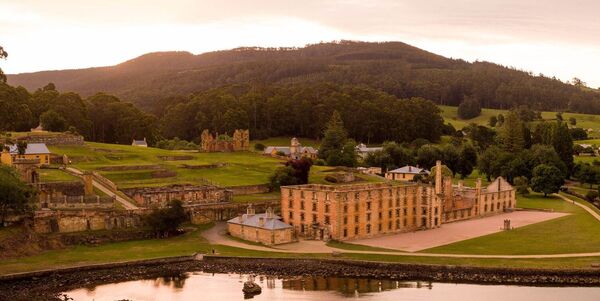
The year is 1787; the British set sail on an eight-month journey to 'New Holland' to establish a new penal colony. Convict transportation was already a tried and tested method of ridding the 'motherland' of criminals. However, since the American Revolution of 1776...
During an 80-year period, from 1788 to 1868, the British established 11 penal colonies across Australia, transporting some 162,000 criminals from British shores. Today it is estimated that 20% of Australians have convict ancestry.
Crimes that carried transportation were often petty. Nicked a loaf of bread? Transportation. Chopped down a tree in an orchard? Transportation. Stolen more than one shilling? Transportation. More serious crimes such as rape, murder or sodomy often carried the death penalty. It was all part of the government's attempt to reduce the overcrowding of British prisons and clean up streets of crime at home.
The Australian government, with the help of UNESCO, have made convict records freely available for the public to browse. This tool allows for anyone to trace their convict ancestry and throws up some interesting records. Browse the records here.
Our in-house designer Ben, recently returned from a trip to Australia on which he visited two convict sites; Cascades Female Factory and Port Arthur Historic Site, both in Tasmania. This blog is written and shows photos taken by Ben.
Sorry, this map cannot be displayed.
The following consent is required:
Tracking & performance, Targeting & advertising.
The 11 sites set up by the British government during convict transportation now form Australia's largest UNESCO site, collectively known as Australian Convict Sites, formally recognised in 2010. UNESCO say the sites are
"...the best surviving examples of large-scale convict transportation and the colonial expansion of European powers through the presence and labour of convicts."
The collection of complexes are credited as being the world's first conscious attempt to build a new society on the labour of convicted prisoners and play a significant part in Australia's 3,000-strong remaining convict sites and in its rich history.
Port Arthur Historic Site, Tasmania
Among the largest penal colony in Australia, Port Arthur was established in 1830 in what was then known as Van Diemen's Land. Initially used as a timber processing plant using prisoner labour, the site was converted by 1833 as a penal colony for repeat offenders. It was built on a philosophy of discipline and punishment, religious and moral instruction, classification and separation, and training and education of convicted men. The system worked for some, leaving rehabilitated and skilled, but others were broken.
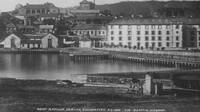
The 136-hectare site is home to over 30 convict-built structures in varying states of ruin. These include the penitentiary; hospital; asylum, prison; church; dockyard; police station; law courts and many cottages, houses and landscaped gardens. The ruined nature of the structures is down to the devastating bush fires of 1895 which destroyed many of the then-abandoned buildings.
In 1996, another tragic chapter was added to Port Arthur's history when a 28-year-old gunman opened fire, taking the lives of 35 people and injuring 19 others. A memorial sits on the site of the shooting in memory of those who lost their lives.
The site is a must-visit for those visiting Tasmania and is a scenic, one-and-a-bit-house drive from Hobart. I didn't have a car, so I joined a coach tour which made the day trip stress-free and easy. It collected me from the waterfront in the city and dropped me at Port Arthur a little after 10am, picking me up again around 4pm, giving plenty of time to explore the site. The price includes transport, admission and a 30-min ferry tour of the harbour.
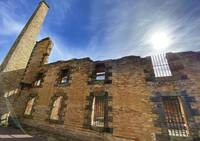
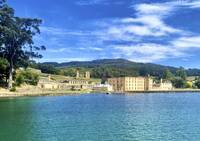
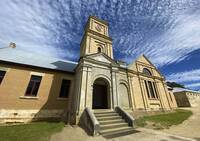
Sorry, this map cannot be displayed.
The following consent is required:
Tracking & performance, Targeting & advertising.
Cascades Female Factory, Hobart, Tasmania
Cold, cramped and alone, over 6,000 female convicts were held at the Cascades Female Factory between 1828 and 1856 in unsanitary conditions, dodging sickness and surviving on supportive camaraderie. Some were sentenced to hard labour, often washing clothes or picking oakum, while others wandered aimlessly around the overcrowded yards.
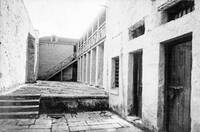
Whilst conditions were no better or worse for women, the system was harsh and made little to no accommodations to expectant mothers or those already with children. The complex was crowded, underfunded, dirty and received little sunshine, sitting in the shadow of the towering Mount Wellington. Over 1,000 children were known to have been born at the Female Factory, none are known to have reached older than eight.
Only a little remains besides the outer walls and well-preserved Matron's Quarters. A conscious decision has been taken to preserve the complex in its current state through the lives of those who were held in the facility.
I visited the site on my third day in Tasmania, having visited Port Arthur the day before. Significant funding from UNESCO has allowed for the creation of a light and air-conditioned visitors centre with a shop, help desk, toilets and a small exhibition which gives a little context before you explore the site.
There are no information boards around the site; the only way to learn more is to join a guided tour (at additional cost) or listen to the self-guided audio guide available on your mobile phone. I opted for the self-guided audio guide, which was comprehensive but hit my battery hard. I recommend bringing a portable charger if you go for this option.
Despite the largely empty interior, the experience was moving, informative and sensitively done. A large memorial wall in what would've been the onsite nursery lists the names of all children who were born and died in the facility - the number of names is hard to take in.
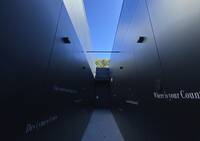
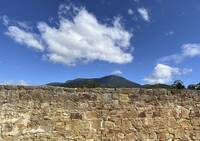
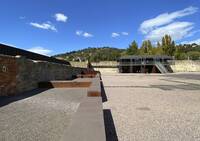
Coal Mines Historic Site, Tasman Peninsula, Tasmania
Reserved for the 'worst of the worst' from nearby Port Arthur, the Coal Mines were a place of hard forced labour. Coal had been discovered at the site in 1833, and local authorities quickly moved to exploit the area and shift away from the costly import of coal from New South Wales. Workers were needed, and convicts at Port Arthur seemed the perfect solution.
![Coal Mines Historic Site [Credit: PAHSMA]](https://worldwide.alanrogers.com/assets/cache/heroimages/722070/Coal-Mines-2-2_38460453c2df.png)
At its peak in the 1840s, over 600 prisoners were stationed at the Coal Mines. New accommodation buildings and facilities were built to cope with the influx, but the crowding together of so many criminals was a cause for concern, as were growing instances of homosexual acts in the dark tunnels of the mines. The site became known as a 'sinkhole of vice and infamy'. In response, new punishment cells were built in an attempt to keep prisoners separate during the night.
By 1847, the main shaft was over 90m (300ft) deep and work to extract the coal became increasingly difficult. A daily quota of around 25 imperial tons per person was implemented - equivalent to 22.5 metric tonnes or four African elephants! Unsurprisingly, this quota proved unattainable, leading to the closure of the mine in 1848.
Brickendon & Woolmers Estates, Longford, Tasmania
Brickendon and Woolmers are the two ancestral estates of the influential Tasmanian Archer family, whose reputation was built on local pioneering efforts and representation in the Tasmanian government. The estates, founded in 1824 and 1817, respectively, prospered on the skilled labour of convict men and women who worked on the land, for the family or in the village as part of their sentence.
![Brickendon Estate [Credit: Brickendon]](https://worldwide.alanrogers.com/assets/cache/heroimages/722551/Brickendon170821520_3600_38460453c2df.jpg)
The estates differed from many other convict sites in Australia at the time because they weren't part of the state-run system. Owned and operated by the Archer family, William Archer would request convict assistance on the farm and provide accommodation, food and clothes. Male convicts often worked on the farm, harvesting food and tending to crops. Women would work under the supervision of William's wife, Caroline, in domestic service.
Today, Brickendon and Woolmers remain working farms, open to the public and showcasing what life would've been like in the 1800s for convict farmhands and domestic servants, as well as the history of the Archer family.
Darlington Probation Station, Maria Island, Tasmania
Situated off the eastern coast of Tasmania, Maria Island is a remote and largely untouched island listed on the Australian National Park register. It was discovered in 1825 and quickly chosen as an ideal site for a penal colony. Lieutenant Governor Arthur remarked on the site's establishment that it was for those whose crimes "were not of so flagrant a nature" that they should be sent to the notorious Macquarie Harbour.
![Darlington Probation Station [Credit: By JJ Harrison - CC BY-SA 3.0]](https://worldwide.alanrogers.com/assets/cache/heroimages/722839/Commissariat_Store_1825_08d1213a46a6.jpg)
However, the colony was short-lived. The opening of Port Arthur in 1930, as well as reports of relaxed punishment and frequent escapes, led to the site's closure as a convict facility just seven years after first opening. It subsequently opened as a probation station in 1842, processing convicts, sorting them into class based on the severity of their crimes and sentence and assigning them to convict sites across Tasmania.
Hyde Park Barracks, Sydney, New South Wales
Standing proud in the heart of Sydney's CBD, the Hyde Park Barracks was designed by convict-turned-architect Francis Greenway. Greenway was sentenced to transportation in 1812 after pleading guilty, on the advice of friends, to forging a financial document. Whilst still a convict, he was responsible for designing Macquarie Lighthouse, the success of which led to his emancipation and subsequent promotion to New South Wales Government Architect. In this new role, he was responsible for designing and overseeing construction of state-run convict facilities.
![Hyde Park Barracks [Credit: By Sputniktilt - CC BY-SA 3.0]](https://worldwide.alanrogers.com/assets/cache/heroimages/723339/rsz_hyde_park_barracks_sydney_exterior_07cfed9189f1.jpg)
Approached by Major General Lachlan Macquarie, who was concerned by the behaviour of male convicts when travelling between their workplaces and own lodgings, Greenway was tasked with designing a barracks-style structure in Sydney to accommodate up to 600 men. The building was completed in 1819, and Macquarie was so impressed with the design that he granted Greenway a full pardon.
Old Government House, Parramatta, New South Wales
From the name, you probably figured this isn't a convict site but rather a public building. Australia's oldest public building, in fact, construction having started in 1799. The house and surrounding land "serves to demonstrate how the British Empire expanded and Australian society has evolved since 1788".
Before this building was constructed, an older government house had existed in the then-rapidly growing settlement of Sydney. Governors desired a more rural residence away from the crime and unsanitary conditions of the city, and so a plot of land alongside the Parramatta River was chosen for a new Government House.
![Old Government House [Credit: Parramatta Park]](https://worldwide.alanrogers.com/assets/cache/heroimages/723802/Old-Government-House-2455_243f00b2f9b5.jpg)
Parramatta was, at the time, a small settlement occupied by the Darug People for thousands of years before colonisation. The city is considered the second oldest in the country, after Sydney. The British settled first in Sydney but found the soil too poor to grow crops, so they ventured further inland in search of more fertile land.
The residence fell out of government use after 1855 after successive governors refused to spend public money on the structure's upkeep. By 1850, the house was considered nearly uninhabitable. It required urgent repair work to replace the roof and rotting structural timbers.
Old Government House now sits in 260 acres of parkland and is furnished as it would've been in the 1820s when Governor Brisbane resided in the house.
Old Great North Road, New South Wales
An outstanding example of convict labour, the Old Great North Road links Sydney with the Hunter Valley Region to the north, traversing some 162 miles (260km). It was built between 1825 and 1836, and though it was considered an engineering triumph, it could have been more successful in practice terms, lacking water and horse feed on route and featuring some extremely steep grades.
Sorry, this map cannot be displayed.
The following consent is required:
Tracking & performance, Targeting & advertising.
It is considered a "nationally significant example of major public infrastructure developed using convict labour", and parts of it have been preserved as the Australian Convict Trail - a national walking route. Some parts are only identifiable by the graffiti marks carved into the rocks by convicts.
Cockatoo Island Convict Site, Sydney, New South Wales
After the closure of the Norfolk Island convict establishment, the British Secretary of State of Colonies was tasked with finding a suitable alternative closer to the mainland, easy to get to but equally as difficult to escape from. On the advice of New South Wales Governor, Cockatoo Island was chosen. Located on the largest island in Sydney Harbour, the goal was complete by 1841 using convict labour. It was used on and off until 1909, also being used as an industrial school and a reformatory.
![Cockatoo Island Convict Site [Credit: Australian Convict Sites]](https://worldwide.alanrogers.com/assets/cache/heroimages/724479/ConvictCourtyardStephenFabling2013_08d1213a46a6.jpg)
After it was decommissioned as a prison, the buildings were used for various other activities including a dockyard, stationing offices during WWll and government office space. Inevitably, these changes in use have each left their mark on the history of the complex; some buildings are in better condition than others. The former convict barracks block, mess hall, military guard room, kitchen, officers' quarters, free overseers' quarters (and a second quarters to the east), and the separately registered Biloela House all form part of the World Heritage site
Sorry, this video cannot be displayed.
The following consent is required:
Tracking & performance, Targeting & advertising.
Fremantle Prison, Freemantle, Western Australia
With over 130 years of active convict history, Fremantle Prison is perhaps the best placed to summarise convict history from the mid-19th century to the late 20th. The prison opened in 1855 with a capacity of 1,000 inmates. The complex housed the main block, a separate prison (built later, where inmates would spend up to 23 hours a day in solitary confinement), a women's prison, a hospital, workshops and an extensive network of subterranean tunnels.
![Fremantle Prison [Credit: Australian Convict Sites]](https://worldwide.alanrogers.com/assets/cache/heroimages/724758/053-FremantlePrison-20130816_da44ecc292c0.jpg)
Upon completion, the prison was the longest and tallest in the southern hemisphere. Its design was based on that of HM Pentonville Prison in London, UK, built 13 years prior. While penal transportation ended in 1868, there was a rapidly growing need for general prison complexes, and Fremantle offered some of the most modern facilities in the country at the time. During WWll, the prison was converted for use as a military prison, holding up to 400 prisoners of war by 1946. After the war, overcrowding and growing violence became an issue, and reforms came in the 70s and 80s. The 1988 Prison Riot, where fires were started and, as a result, cells reached temperatures exceeding 55 degrees Celsius, staff were held hostage and $1.8 million of damage was sustained, marked the beginning of the end for the prison. It closed in 1991. The last person to be hanged at Fremantle was Eric Edgar Cooke in 1964.
The complex is now open to the public and is the best-preserved, convict-built prison complex in the country. The subterranean tunnel system that runs underneath the complex opened to visitors in 2005.
Kingston & Arthur's Vale Historic Area, Norfolk Island
The Kingston and Arthur's Vale Convict Site on Norfolk Island was the most isolated of the penal colonies, set up in 1788. It gained a reputation as being one of the harshest and cruellest of Australia's penal settlements, but it was also the site of reform experiments, testing new prison systems and methods before they were rolled out across the prison network.
![Kingston & Arthur's Vale Historic Area [Credit: Australian Convict Sites]](https://worldwide.alanrogers.com/assets/cache/heroimages/725107/aerial-kavha-sky_ed17a03b07dd.jpg)
The settlement was home to convicts who were considered too ruthless for establishments in NSW and Tasmania. Convicts worked sunrise to sunset, mostly on the land using manual methods. Inside the prison, conditions were very poor. Prisoners were given one meal every 48 hours. A new approach to prison philosophy was introduced for just four years of the prison's 30-year operation - conditions improved briefly.



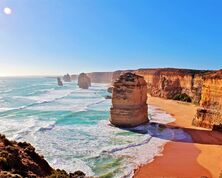
Departures: Year Round
from £4,947 pp.
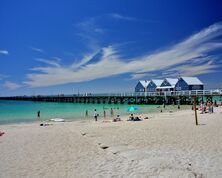
Departures: Year Round
from £4,045 pp.

Departures: Year Round
from £4,247 pp.
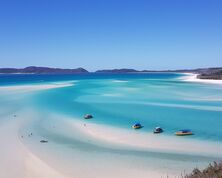
Departures: Year Round
from £4,145 pp.
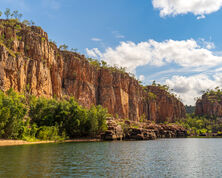
Departures: May - October 2026-27
from £3,649 pp.
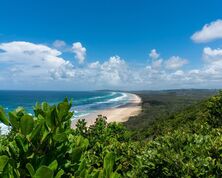
Departures: Year Round
from £3,649 pp.
Ben Tully
Visual Design & Content Creation
Ben deals with all things design, working on the visual design of our annual guides, Destinations magazine, information leaflets, social media and email campaigns, and much more across the Alan Rogers, Rallies and Worldwide brands. He also produces written content for our blogs alongside our other contributors.
More by Ben TullyRecent Blog Posts
-
Explore the World Your Way
February 13, 2025 -
Guest Post: A Journey through the Parks and Lakes of Western Canada
October 28, 2024 -
Rhythms of the South: Celebrating the Sounds of Southern Soul, Gospel and Funk
October 10, 2024 -
Rhythms of the South: Exploring the Soul of Memphis Blues, Soul and Rock 'n' Roll
October 2, 2024 -
Rhythms of the South: A Journey Through the Jazz and Dixieland Roots of New Orleans
September 24, 2024
